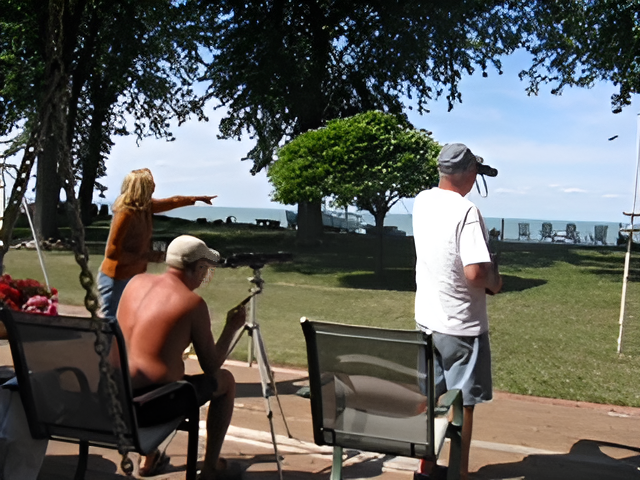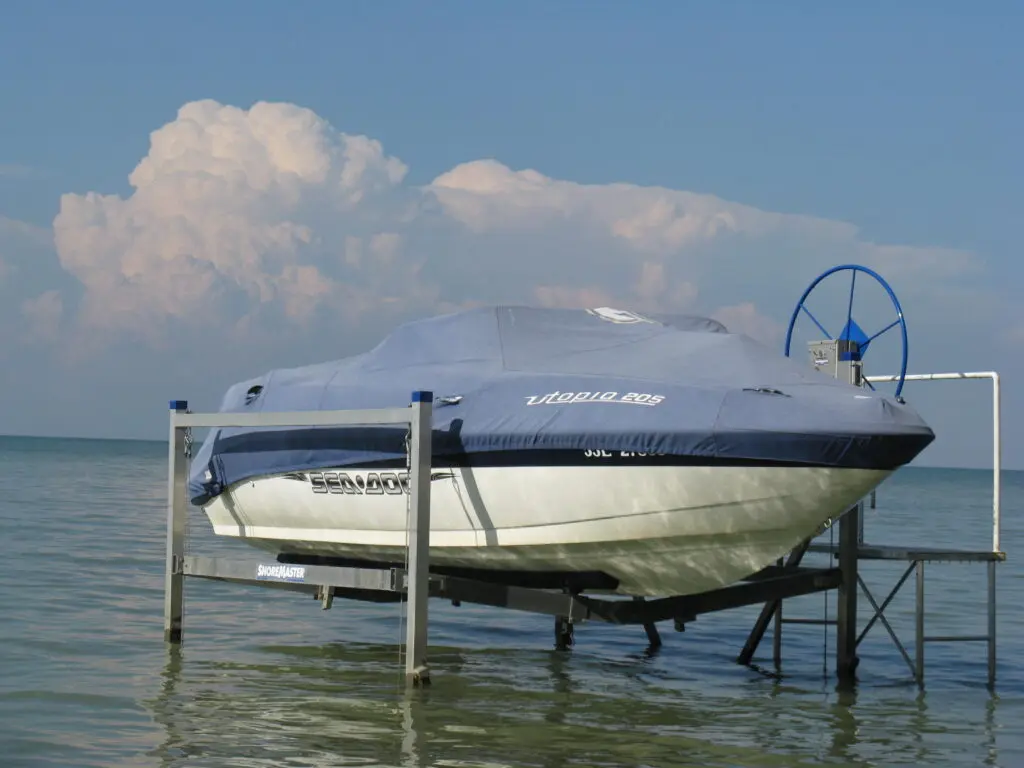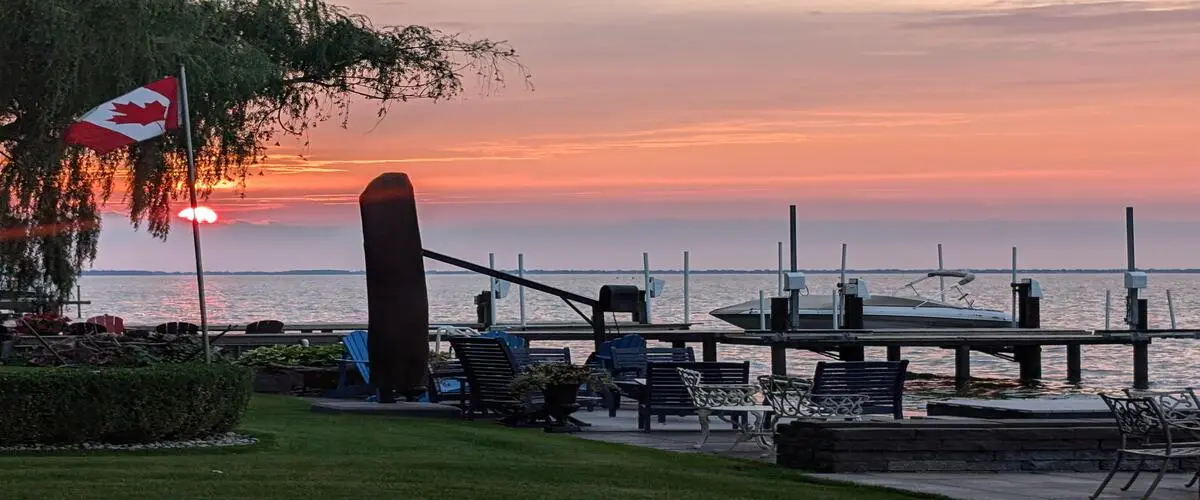This is an experience that happened to me 20 years ago, and as I get older, I feel a pressing need to record the extraordinary events of that day. Everything I’m about to share is true, exactly as it happened.

It was a warm, beautiful summer day. Our friends from Florida, John and Diane, were visiting for a week. We were all sitting on my front deck, overlooking Lake St. Clair. John, enjoying his favorite pastime, was scanning the lake with my telescope. It was a windy day, with a strong south wind—the kind of wind that’s perfect for casual sailing. With a South wind, the water would stay calm for about a mile offshore, but there would still be a good breeze for excellent sailing conditions. I knew this well from my own days sailing on my Hobie Cat, back and forth parallel to the shoreline.
After a few minutes of looking through the telescope, John announced that he could see a small sailboat about a mile out. “It looks like a father and son,” he said. “But the sail is shredded, and the boy’s waving an oar—looks like they need help.”
I’d called the coast guard many times before to report distressed boaters on the lake, and I repeated to John what they always told me: “Keep an eye on them and see if a passing boater will come to the rescue.”
But on this day, there were no other boats in sight, and the strong winds were creating whitecaps on the water about half a mile out. Soon, the only thing visible was the mast of the sailboat as it drifted over the horizon.
Something clicked inside me—maybe because I had been in a similar situation before (a story for another time), or maybe I just felt it was the right thing to do. I looked at John and said, “Let’s go rescue them.”
John looked at me, surprised, then nodded. “Okay, let’s go.”

My boat, a 20.5-foot Sea-Doo, was on a boat lift right in front of my house. We waded out, removed the cover, and lowered it into the water. We fired up the engine and aimed toward the stick-like silhouette on the horizon that was the sailboat’s mast.
The water was calm near the shore, so we travelled at a good speed. But once we reached about half a mile out, the waves started getting larger, and I had to slow down. By the time we were about three miles from shore, the waves had grown so large that I was starting to get concerned. And then it happened.
The boat slammed down hard after cresting a large wave, crashing into the trough on the other side. Immediately, the engine cut out. I looked over at John, and his expression mirrored mine—fear. We had set out to help someone in distress, and now we were in trouble ourselves. Thankfully, I had brought my cell phone for emergencies. I pulled it out of my pocket, flipped it open, and stared at the screen in dismay: “No Service.”
Panic began to creep in, but as I was putting the phone back in my pocket, I noticed something at my feet. It was the cord for the tether switch. For those unfamiliar, a tether switch is a safety device designed to shut off the engine if you’re thrown out of the boat. One end of the cord clips onto your life vest, and the other end fits onto the tether switch on the boat. I rarely bothered clipping it on, so the cord typically hung loose. The force of the wave must have knocked it off.
I quickly reattached the tether, and to our immense relief, the engine roared back to life. We could now see the sailboat more clearly, though it was still only visible for brief moments as it crested the massive waves. Determined not to turn back now, we pressed on, knowing we were close to reaching them.
Within half an hour, we finally reached the desperate boaters. The father sat at the back of the small sailboat, seemingly in a trance, possibly in shock. He didn’t even acknowledge our arrival. His son, who looked to be about 10 years old, was visibly relieved to see us. The boat they were on looked to be a 14’ Sunfish. The wind was howling, and the shredded remnants of the sail were flapping so violently that any verbal communication was impossible.
The waves were tossing us around too much for me to get close, so we decided to throw a rope to the boy as we circled the boat. After several attempts, he finally caught it. Using hand signals, we instructed him to tie the rope to the front cleat of the sailboat. He carefully slid across the deck and managed to secure it. With the rope tied, I turned my boat towards the shore.
I wasn’t sure how far out we were, but it had to be at least five miles or more—there were no houses visible on the horizon, only the tops of distant trees.
Anyone who has spent time boating knows it’s much easier to travel with the waves than against them. I was reminded of this the moment the first wave came directly at us. I expected my boat to rise over it, but instead, the wave crashed over the bow, flooding the boat with gallons of water. My boat is a bow- rider, which means there’s no enclosed front deck—any water that comes over the bow goes straight into the boat. A few more waves like that, and we’d be in serious danger of sinking.
Making matters worse, I had recently disconnected the bilge pump, suspecting it was draining my battery when the boat wasn’t in use. I had to act fast. I turned the boat to take the waves at a 45-degree angle, and thankfully, this worked. The boat began to climb over the waves, descending more gently into the troughs. I had no idea waves could grow this large on Lake St. Clair.
The trip back was long and tense. I didn’t dare look back at the father and son; my focus had to stay on keeping the boat from taking on more water. We were heading diagonally now, which meant we’d land several miles down the shore from where I lived. Each wave tugged at the boat we were towing, but slowly, we made progress.
After what felt like an eternity, we finally made it into the calmer waters closer to shore. When we were about a hundred feet from land, with my depth gauge showing three feet, I stopped the boat. It was quiet enough now for us to talk, and I wanted to ask the father and son where they lived.
As soon as I stopped the boat, they jumped into the shallow water and waded over to us. When they were alongside, they looked up and said, “Thank you for saving us. What can we pay you?”
John and I both responded, “We don’t want anything. We were just happy to save you.” What I was really curious about was where they lived, so I asked, “Where’s your house?”
I expected them to give some vague directions—something like, “a mile this way” or “a mile that way.” But to my surprise, they simply pointed and said, “We live right there,” gesturing toward a house on the shore, not far from where we had stopped.
The odds of that happening were incredible. Somehow, I think they must have assumed that I knew exactly where they lived and had purposely brought them back to their own front yard. I wish we had exchanged personal information with the father and son, but we didn’t. At least I knew where they lived.
When we got back to my house, I put the boat in the lift and started cranking it up with the manual wheel. The boat was incredibly heavy from all the water we had taken on. I had to open the drain plugs to release what must have been over a thousand pounds of water.
Fast forward ten years. I finally decided I wanted to reconnect with the people we had rescued that day. I had so many questions I wanted to ask. Over the years, I had passed by their house a few times on my boat and saw the little Sunfish sailboat pulled up on the beach, so I knew exactly where it was from the lakeside. I also paid attention to the nearby landmarks to make sure I could recognize the house from the road.
One day, I drove over and knocked on the door. A woman answered, and I explained who I was and why I was there. She listened as I described the family we had rescued, and then told me that they had been renters. They had moved away years ago, and she had no idea where they had gone.
One final thing I’d like to add to this story: whenever I want to feel good or find my “happy place,” I think about that day. There’s no greater joy than knowing you were truly responsible for saving someone’s life. It’s a memory that still fills me with gratitude and pride, even all these years later.
Rob
